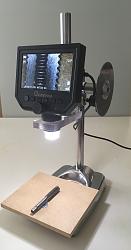Not only being cheap and lazy, I figured out the fastest way to obtain a suitable piece
will be to visit my closest merchant shipping yard, where the guys overhauling marine diesels dwell.
One or a few discarded biggie wrist/ gudgeon pins could perhaps be around for a smallish fee?
Case hardened with nice wall thickness and weight, the ends should be pretty easy to grind and lap.
Their perimeter being hardened, ground and polished for starters, I guess the conrod/ piston sees the most wear?
Or is this just wishful thinking, again?
Cheers
Johan


 LinkBack URL
LinkBack URL About LinkBacks
About LinkBacks


 Reply With Quote
Reply With Quote







Bookmarks